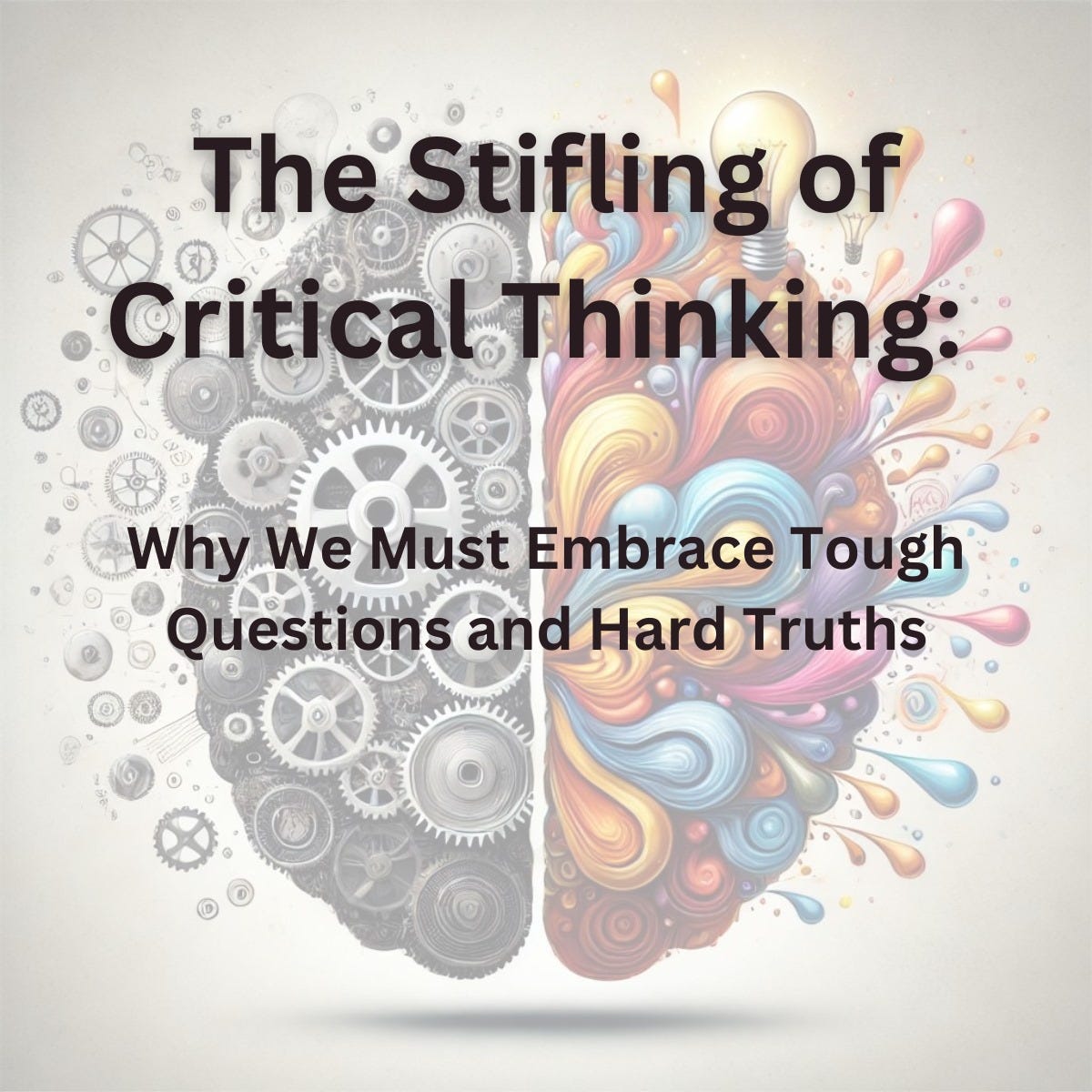The Stifling of Critical Thinking
In an age where information is more accessible than ever, it’s paradoxical how critical thinking seems to be increasingly stifled. Social media, depending largely on who you follow, often creates echo chambers that reinforce your beliefs rather than challenge them. While this comfort zone feels reassuring, it’s a dangerous place for anyone looking to grow, innovate, or lead.
Critical thinking isn't just about analyzing data; it's about having the courage to ask tough questions and take a hard look at projects or experiments. It’s about being willing to accept that some efforts might need to fail—not because they lack merit, but because failure can be a great teacher. As Albert Einstein famously said, “No problem can be solved from the same level of consciousness that created it.”
Imagine leading a project that, despite your team's best efforts, isn’t producing results. Instead of endlessly tweaking, what if you paused to ask uncomfortable questions? What if this project might not just need refinement but perhaps should be abandoned altogether?
In environments where critical thinking is discouraged, these questions often go unasked. Company politics can create a culture where challenging the status quo is seen as a threat rather than a valuable contribution. During elections, emotional intensity often drowns out rational discourse, leading to polarization rather than understanding. Cancel culture further stifles dialogue by quickly shutting down dissenting opinions. In such climates, fear of being ostracized prevents individuals from expressing their true thoughts, leading to a chilling effect on free speech and a further erosion of critical thinking.
Additionally, people may fear being persuaded by ideas that challenge their beliefs, or conversely, those who seek to persuade might push too hard, creating resistance instead of understanding. This dynamic stifles open dialogue, turning opportunities for growth into battles for ideological dominance.
Surrounding ourselves only with like-minded individuals limits our capacity to think critically. We end up in a feedback loop, getting answers that mirror our own thoughts, leaving no room for unexpected or groundbreaking ideas. By seeking out diverse perspectives, especially those that challenge our own, we open the door to new possibilities and solutions.
As leaders, innovators, and thinkers, we must cultivate an environment where critical thinking thrives. This means encouraging dissent, welcoming tough questions, and being willing to confront hard truths. It means recognizing that failure is not the end but a critical step on the path to success.
So, let’s challenge ourselves and our teams to think more critically, ask tougher questions, and embrace the possibility of failure—not as a defeat, but as an essential part of growth and innovation.



